Menu
Physics Lesson 13.2.6 - Bimetallic Strip. Thermostat
Please provide a rating, it takes seconds and helps us to keep this resource free for all to use
Welcome to our Physics lesson on Bimetallic Strip. Thermostat, this is the sixth lesson of our suite of physics lessons covering the topic of Thermal Expansion, you can find links to the other lessons within this tutorial and access additional physics learning resources below this lesson.
Bimetallic Strip. Thermostat
A bimetallic strip is a system composed by two different metal strips, which are placed side by side and welded together. This process is carried out in normal temperature, so initially the system looks like this:
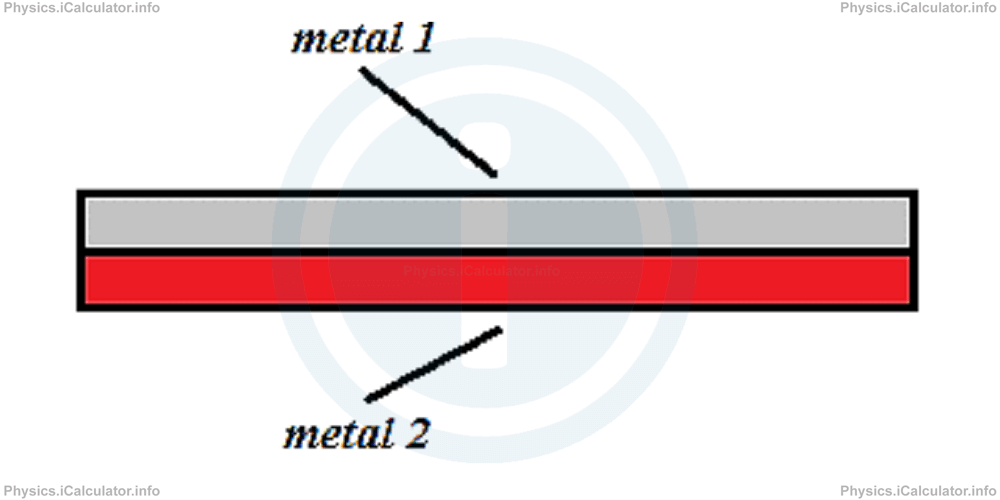
Let's suppose that the coefficient of linear thermal expansion of metal 1 is greater than that of metal 2. This means the metal 1 can expand or contract more than the metal 2. As a result, when the bimetallic strip is heated up, it bends around the material with the smallest coefficient of linear thermal expansion (metal 2) as it remains shorter (metal 1 expands more than metal 2). On the other hand, when the bimetallic strip is cooled down, the metal 1 contracts more than the metal 2 because it has a greater coefficient of thermal expansion and contraction as well. As a result, the system bends around the metal 1 as shown in the figure.
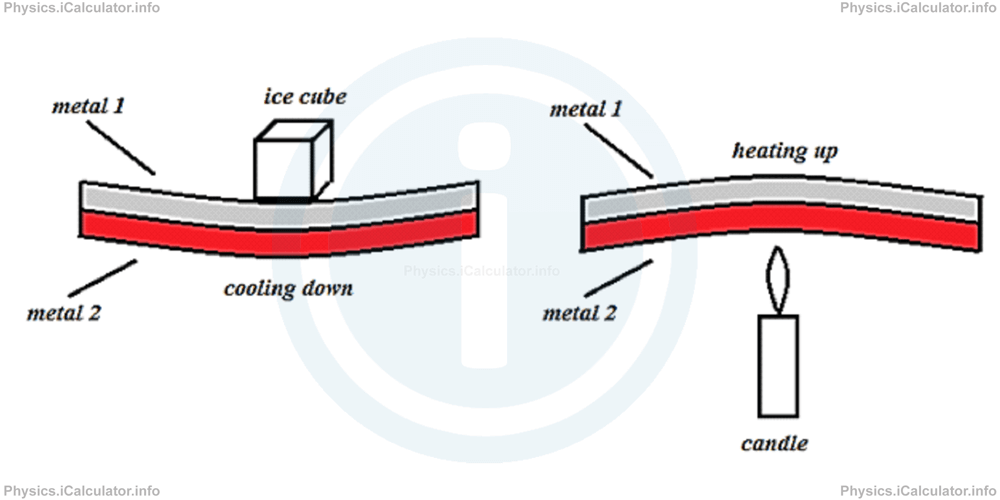
This property of different amount of thermal expansion or contraction two metals experience when they are exposed to the same change in temperature, is used to construct thermostats, which are equipment that keep heaters at constant temperature by controlling the current flow in an electric circuit through bimetallic strips. Thus, if the heater is at the desired temperature, the bimetallic strip is at straight position, as shown in the figure.
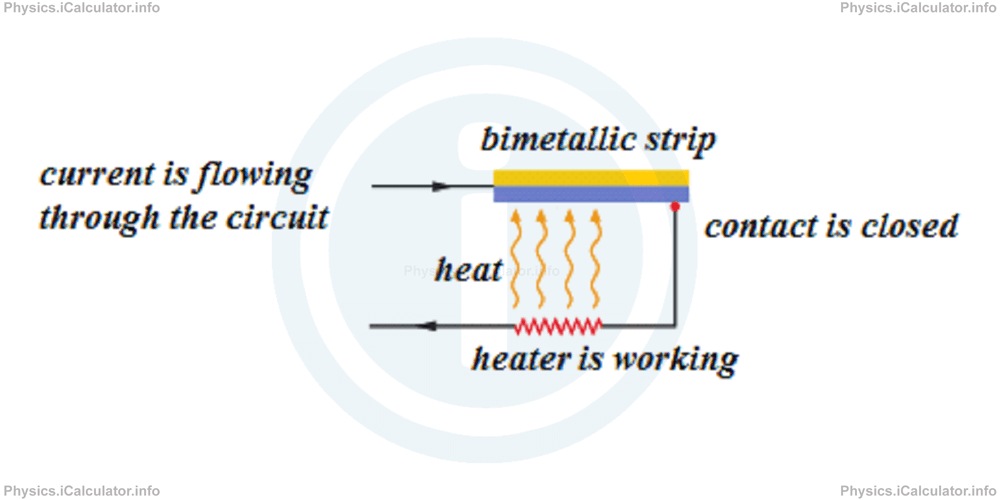
When the heater is delivering more heat than needed, the bimetallic strip bends around the metal with the smallest coefficient of linear expansion. As a result, the contact is open, so the current flow in the circuit stops as shown in the figure below. This state lasts until the bimetallic strip cools down to the desired temperature and therefore it straightens again. Then the current starts flowing again through the circuit as the contact closes, and so on.
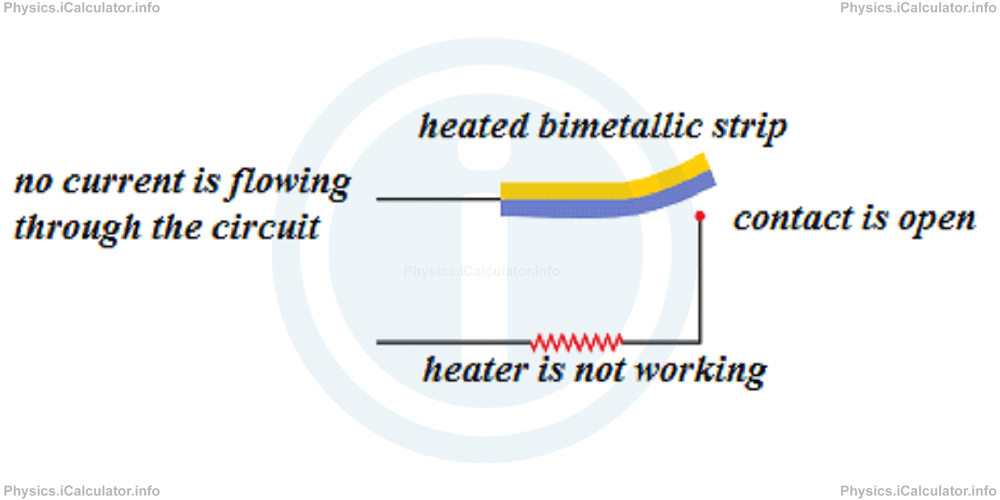
This is basically the operating principle of a thermostat.
Example 4
Two bimetallic strips made of different materials at room temperature (200
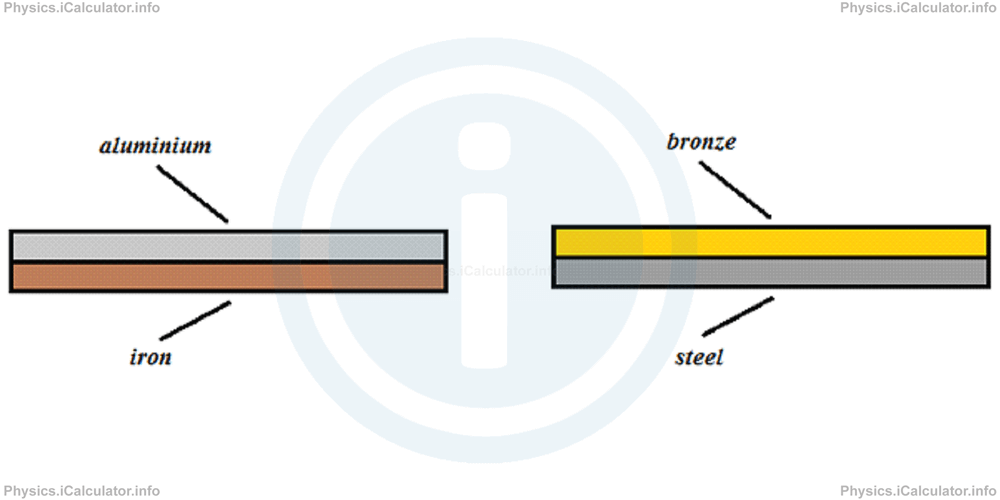
The coefficients for linear thermal expansion of the four materials are:
iron => 12 × 10-6 K-1
bronze => 18 K-1
steel => 11 K-1
What is the shape of the two bimetallic strips when they are heated up at a few hundred Celsius degrees?
Solution 4
When a bimetallic strip is heated, it bends around the material with the least coefficient of thermal expansion, as it expands less than the material with the smallest coefficient. Therefore, the first bimetallic strip will bend around the iron strip when heated, as the coefficient of thermal expansion of iron is smaller than that of aluminum, while the second bimetallic strip will bend around steel when heated, as steel has a smaller coefficient of thermal expansion than bronze. However, the bending in the second strip will not be of the same degree as in the first strip; the first bimetallic strip will bend more than the second one, as the difference in the coefficients of linear thermal expansion in the first bimetallic strip is much greater than in the second.
The two bimetallic strips will look as in the figure below when heated.
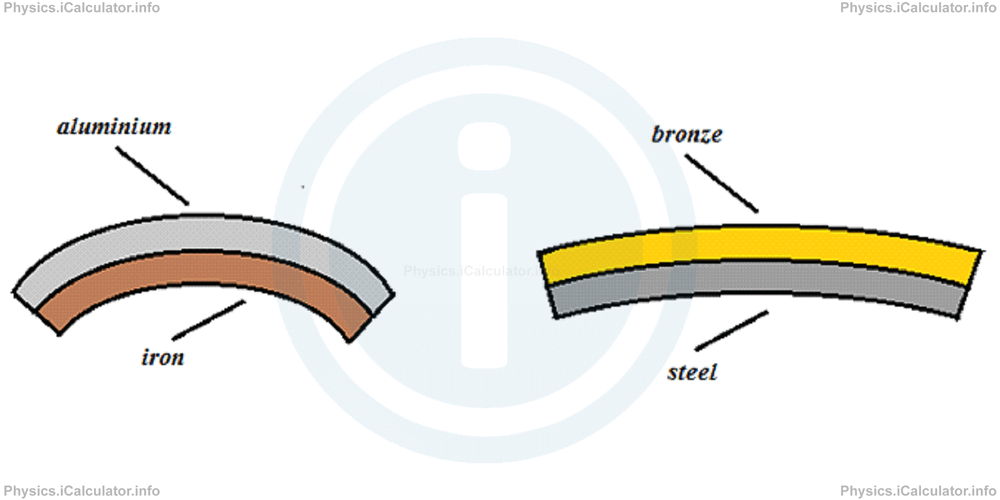
You have reached the end of Physics lesson 13.2.6 Bimetallic Strip. Thermostat. There are 7 lessons in this physics tutorial covering Thermal Expansion, you can access all the lessons from this tutorial below.
More Thermal Expansion Lessons and Learning Resources
Whats next?
Enjoy the "Bimetallic Strip. Thermostat" physics lesson? People who liked the "Thermal Expansion lesson found the following resources useful:
- Bimetallic Feedback. Helps other - Leave a rating for this bimetallic (see below)
- Thermodynamics Physics tutorial: Thermal Expansion. Read the Thermal Expansion physics tutorial and build your physics knowledge of Thermodynamics
- Thermodynamics Revision Notes: Thermal Expansion. Print the notes so you can revise the key points covered in the physics tutorial for Thermal Expansion
- Thermodynamics Practice Questions: Thermal Expansion. Test and improve your knowledge of Thermal Expansion with example questins and answers
- Check your calculations for Thermodynamics questions with our excellent Thermodynamics calculators which contain full equations and calculations clearly displayed line by line. See the Thermodynamics Calculators by iCalculator™ below.
- Continuing learning thermodynamics - read our next physics tutorial: Absorption of Heat
Help others Learning Physics just like you
Please provide a rating, it takes seconds and helps us to keep this resource free for all to use
We hope you found this Physics lesson "Thermal Expansion" useful. If you did it would be great if you could spare the time to rate this physics lesson (simply click on the number of stars that match your assessment of this physics learning aide) and/or share on social media, this helps us identify popular tutorials and calculators and expand our free learning resources to support our users around the world have free access to expand their knowledge of physics and other disciplines.
Thermodynamics Calculators by iCalculator™
- Carnot Engine Efficiency Calculator
- Entropy Calculator
- Gas Laws Calculator
- Molecular Mean Free Path Calculator
- Translational Kinetic Energy Of Gas Calculator
- Root Mean Square Speed Calculator
- Ideal Gas Law Calculator
- Change In The Gas Internal Energy Calculator
- Radiative Heat Transfer Calculator
- Evaporative Heat Transfer Calculator
- Convective Heat Transfer Calculator
- Conductive Heat Transfer Calculator
- Final Temperature Of Mixture Calculator
- Heat Absorbed Or Released Calculator
- Thermal Expansion Calculator
- Temperature Calculator